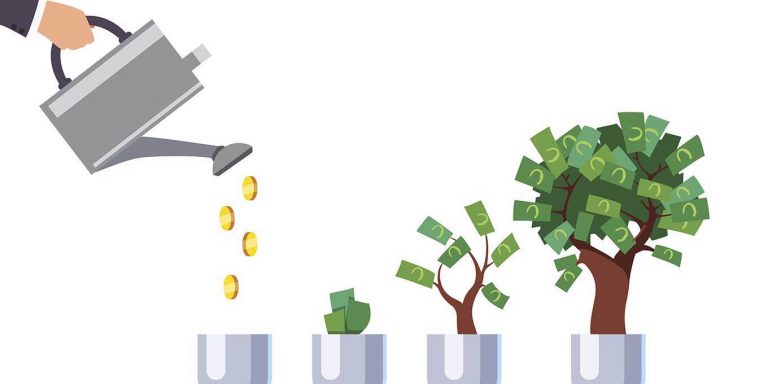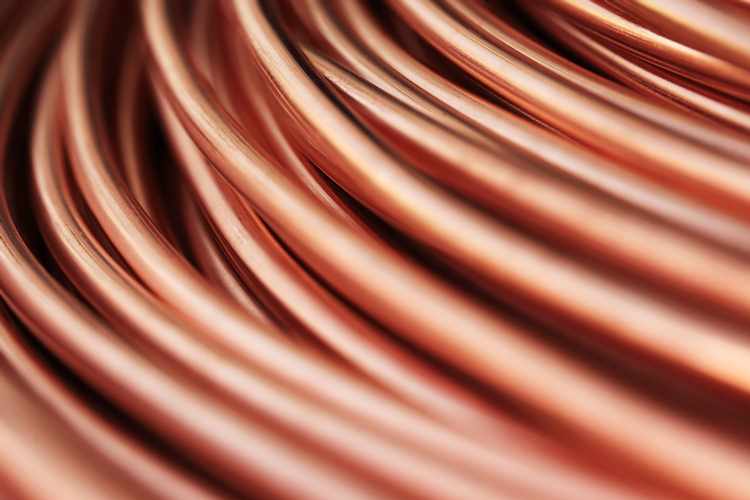Attacks on Saudi Oil Plants Risk Lowering Aramco IPO Valuation

(Bloomberg) — As bankers discussed Saudi Aramco’s initial public offering at the Ritz Carlton hotel in Dubai last week, a drone attack was being planned to hit the heart of its operations over the weekend. It caused Saudi Arabia to halve its oil output and may cut the valuation of Aramco’s milestone deal.
The giant oil producer has accelerated preparations for a share sale that could happen as soon as November in Riyadh. Dozens of bankers from Citigroup Inc (NYSE:C). to JPMorgan Chase (NYSE:JPM) & Co. met last week to work on the deal, with analyst presentations scheduled for Sept. 22, people familiar with the matter have said.
“Crown Prince Mohammed bin Salman will push the company to demonstrate that it can effectively tackle terrorism or war challenges,” analysts led by Ayham Kamel, head of Middle East and North Africa research at the Eurasia Group, said in a report. “The attacks could complicate Aramco’s IPO plans.”
In an attack blamed by the U.S. on Iran, a swarm of drones laden with explosives set the world’s biggest crude-processing plant ablaze. Floating a minority stake of the oil giant, officially known as Saudi Arabian Oil Co., is part of Prince Mohammed’s efforts to modernize and diversify the economy.
The attacks underscored geopolitical tensions in the region. Iran denied responsibility, which was instead claimed by Iranian-backed Houthi rebels in Yemen.
Oil prices surged by the most on record to more than $71 a barrel after the strike removed about 5% of global supplies. The main Saudi stock index Sunday fell as much as 3.1%, leading losses in the Gulf.
Back in 2017, investors suspected that Saudi government-related funds swooped in to support the market after the imprisonment of local billionaires at the Ritz-Carlton in Riyadh. That also happened amid the international crisis following columnist Jamal Khashoggi’s murder at the Saudi consulate in Istanbul.
Here’s more from analysts and investors:
Eurasia
- “The latest attack on Aramco facilities will have only a limited impact on interest in Aramco shares as the first stage of the IPO will be local. The international component of the sale would be more sensitive to geopolitical risks”
- Current valuation estimates for Aramco and its assets might not fully account for geopolitical risks
- NOTE: Prince Mohammed, the architect of the IPO, has said he expects Aramco to be valued at over $2 trillion, but analysts see $1.5 trillion as more realistic
Al Dhabi Capital, Mohammed Ali Yasin
- “I think this attack may delay the IPO even on the local exchange, and could affect the valuation negatively, as the investors have seen a live demonstration of the risk levels of the future revenues and business of the company. That was very low prior to this weekend attack”
- “Aramco has one main source of revenue, oil. That is its strength, but now it is becoming its biggest weakness if it gets disrupted”
United Securities, Joice Mathew
- This “will force investors to go back to the drawing board and re-evaluate their risk models on Aramco”
- “Even though this is a rare event, which could be potentially categorized as 4 or 6 sigma levels, the geopolitical risk premium on Aramco’s valuation model would show a sharp increase”
- “As far as the pricing is concerned, my view is that there may not be much of an impact if the government is contemplating a 1% listing on the Tadawul. I think the government has the power and ability to influence the decisions of anchor investors there”
Tellimer, Hasnain Malik
- “Ultimately the security risk is not so acute that it outweighs oil price, oil output and free float drivers of the valuation”
- This attack “also provides an opportunity for Aramco to demonstrate the redundancy and resilience of its supply chain by minimizing disruption to customers and thereby helping to mitigate the valuation impact of this risk”
Qamar Energy, Robin Mills
- “It will be all but impossible to proceed with the IPO if there are ongoing attacks”
- “Valuing Aramco like Shell (LON:RDSa) or ExxonMobil (NYSE:XOM) gets us to about $1.2-1.4 trillion. But that would drop significantly if we apply company-specific risk factors”
Al Ramz Capital, Marwan Shurrab
- “The attacks could impact foreign sentiment for the IPO, but I don’t see a substantial hit to the valuation at this stage”
- “Geopolitical risk has always been an important factor for valuations across the Middle East region. Aramco will have to demonstrate its financial resilience toward such incidences to gain investors confidence”









OXFORD – Some of the most influential players in the global economy are spearheading the shift toward a clean, green, emissions-free world, even while key governments stand idle. Financial giants from Europe, China, Japan, the United States, Australia, and elsewhere can see the looming risks and rewards, and they are not waiting on policymakers to signal what needs to be done. By setting immediate bans on new fossil-fuel investments, labeling clean and dirty energy producers, and dumping unappealing stocks, the financial industry is redirecting huge flows of money from fossil fuels to low-carbon technology.
Such decisions can ripple across economies. Consider, for example, the split between state and private energy finance in India. According to the Delhi-based Centre for Financial Accountability, primary finance for coal-fired power plants dropped by 93% between 2017 and 2018, while finance for renewables rose by 10%. Among the loans for coal projects in 2018, most came from government-controlled financial institutions, whereas three-quarters of renewables financing came from private commercial banks.
Similarly, banks and traders in Japan are abandoning coal projects in favor of renewables, even though the government has resisted setting a phase-out date for coal-powered energy. Three Japanese coal-plant projects have been canceled or delayed this year. And at the global level, the International Energy Agency (IEA) reports that investments in coal-power plants hit a century low in 2018, while more coal generators were retired.
This trend will become more pronounced as the number of financial firms shifting from fossil fuels continues to grow. Consider the headlines since March. Norway’s sovereign wealth fund has won parliamentary approval to divest $13 billion from fossil-fuel stocks, as part of the largest fossil-fuel selloff to date. Japan’s Mitsubishi UFJ Financial Group, one of the world’s largest banks in terms of assets, ceased financing new coal-fired power projects. And Chubb became the first major US insurer to announce a ban on coal coverage, while Suncorpbecame the last Australian insurer to end coverage for new coal-mining and coal-power projects.
Moreover, the London Stock Exchange has recategorized oil and gas stocks as “non-renewable energy” and classified green-energy stocks as “renewable” instead of “alternative.” And the world’s largest investor in overseas coal projects, the Oversea-Chinese Banking Corporation, said it would end financing for coal-power plants (once it finishes two final projects in Vietnam), while China’s State Development & Investment Corporation announced plans to stop investing in new coal-fired plants and focus on new energy sources.
More broadly, the Investor Agenda for a low-carbon world has attracted 477 signatories, representing around $34 trillion in assets under management. These investors are calling on governments not just to limit rising temperatures, but also to meet the Paris climate agreement’s more difficult goal of limiting global warming to 1.5°C above pre-industrial levels.
Meanwhile, the Institute for Energy Economics and Financial Analysis has found that those who ignored climate-change warnings have already taken a financial hit. BlackRock, the world’s largest fund manager, lost around $90 billion over the last decade, three-quarters of which was due to its holdings in ExxonMobil, Chevron, Shell, and BP. And investors in General Electric, including BlackRock, lost a whopping $193 billion in the three years leading up to 2018, because the company misjudged the pace of the shift to green energy and the collapse in demand for gas turbines and thermal power stations.
Although the shift away from fossil fuels is already monumental, a potential tsunami awaits. Those divesting from fossil fuels are the early adopters who have sensed a change in wind direction and readjusted their sails. But far more needs to be done. Because those firms’ competitors have yet to take any steps toward divestment, trillions of dollars in carbon assets remain on investors’ balance sheets.
Moreover, according to the IEA, while coal investments have fallen, capital spending on oil, gas, and coal nonetheless bounced back in 2018, and investment in energy efficiency and renewables stalled. Worse, the consultancy Wood Mackenzie finds that the renewables boom has translated into only 2% of global energy demand. As matters stand, coal, oil, and gas could still supply 85% of primary energy by 2040, down only slightly from 90% today.
To complete the transition away from fossil fuels will require drilling down to the core of the global economy. It does not help that financial institutions in China funneled at least $1 billion in “green” financing to coal-related projects in the first half of this year. Companies cannot keep producing oil, gas, and internal combustion engines while gradually shifting to cleaner technologies; they need to make a clean break.
Moreover, financiers need to look beyond coal and withdraw support for all fossil fuels. Equally important, governments must set an ambitious trajectory for their economies that impels adherence to the 1.5°C limit on warming. Our current path will lead to warming of 3°C or more, which would have catastrophic consequences.
The United Nations Climate Action Summit on September 23 offers the opportunity for financial institutions and governments to do what is necessary. Secretary-General António Guterres has called for gold-standard leadership, in the form of government and private-sector commitments to slash emissions to net zero, with interim targets every five years.
Guterres’s call to action is echoed by all who have been demonstrating and striking for the same goal. Investors need to rise to the occasion, by structuring portfolios in such a way as to achieve net-zero emissions by 2050. That means pushing the companies in their portfolios to change, too, or risk being cut off and left behind. But setting long-term aspirations won’t be enough. Actionable steps for the coming months and years must accompany the commitments made today, to ensure that progress remains on track.
To that end, Mission 2020 is collecting stories of progress from across the global economy. Our 2020 Climate Progress Tracker Tool, an open-access database, is updated regularly with climate commitments by countries, businesses, cities, and others. The bigger the divestment movement grows, the harder it will be to hide in the shadows, clinging to the past.